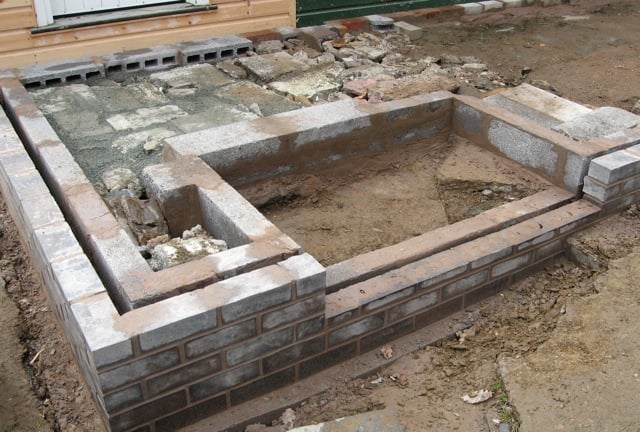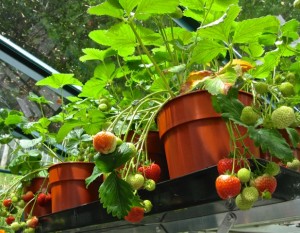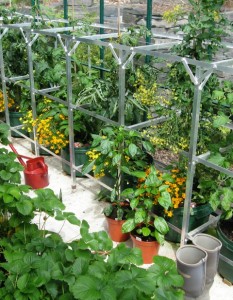Like every man-made structure, a greenhouse has an embedded ecological cost – the inspiring difference being that with a greenhouse, you get the chance to clear the debt.
These days nudging each side of the spring equinox – when day and night match each other in length – are for me among gardening’s headiest. March’s bright rays now have real oomph in them, enough to coax brave lizards onto sun-warmed slate (I jump from my skin when the first one skitters off over bone-dry leaves). On the warming bank, a vanguard of hoverflies and bees of all hues make busy in the last-chance snowdrop saloon; bluebells are up next. And that’s just outdoors; stepping into my greenhouse I’m headier still.
Once I’m behind the glass, the equinoctial sun’s promise goes up several gears. What was warm outdoors is real heat once it’s passed through the amplifying, energy-catching glazing. Ten minutes of sunshine now and the greenhouse is buzzing with promise, and with the invisible wings of hoverflies lured to extra-early calendula flowers. Oriental greens are sprouting fast, bouncing back from being harvested to within a leaf of their lives. Pots of peat-free compost warm up in the sun, as the first sun-germinated sowings stir. These are potent days.

The hitch with feeling heady is that more often than not it urges you to pause – to just stop for a while. Gardening’s pace quickens relentlessly from here on, so now’s a good time to grab a breath and reflect – not just on where your garden or allotment might be going this coming year, but on where it’s come from. My gardening is guided by the simple desire that it should give more to the natural world around us than it takes; I love the idea of my garden being a gentle yet powerful force for good.
It’s six years since my 5.5m by 2.4m (18ft by 8ft) lean-to greenhouse – the biggest one I’ve ever had – went up. To mark its birthday, I decided to grab a cuppa, enjoy its algae-tinted balminess (it needs a scrub down), and reflect on how it’s doing as part of that positive force. It’s at the core of my attempts to garden more wisely and lightly, but there have been compromises along the way, and some niggles remain.
Building the base for the greenhouse needed skills – bricklaying, for one – which I don’t possess. With those came the need for bricks, concrete and mortar, transport of materials and people, water, and some electricity to turn the mixer (that power did come from a renewable source). Just getting the base in caused the greenhouse’s energy inputs to spike. My original idea of making the floor out of recycled plastic decking fell by the wayside, leaving me turning again, grudgingly, to high-energy, carbon-emitting concrete. Another spike – although I blunted it by using the old porch base and assorted skip candy from around the garden to bulk it out, keeping the concrete to a minimum (and skips at bay).

When the greenhouse arrived, on a truck – which did the 40-mile round trip daily over the course of a week as two people put it together – another spike stretched beyond my control. I don’t know what the journey for the frame, glazing and fixings involved before it ever got loaded onto the truck – or how much energy went into actually making the parts. Finding a suitable pre-loved greenhouse reasonably locally would have shrunk the overall spike (I would have inherited the energy already embedded in it during its manufacture, rather than summoning any more), but I drew a blank. At least the aluminium frame (as well as my multifunctional staging) is rot-proof and infinitely recyclable, but the non-recyclable safety glass might one day be destined for landfill. By the time it finally warmed up, my greenhouse’s ‘footprint’ was pretty sizeable; just by having it I’d already taken quite a chunk from the world.
Since then there have been no more big inputs, but positive good-for-the-world outputs have been legion (with the glass greened by algal bloom during dreary, wet summers, even grazing slugs agree). I’ve kept my heating bills both cash- and carbon-zero by relying only on today’s here-and-now sunshine to do the warming; I’m happier moving with the seasons rather than trying to outwit them by burning fossil gas or paraffin inside swathes of bubble plastic.
While slugs were busy keeping the glass clean, I’ve been busy sowing and raising fresh, organic food year-round, modestly denting my shopping bills. I grow my vegetable crops, as well as fruit, flowers and bulbs, either in my own mileage-free potting mix or in a good quality bought peat-free (mileage variable). I try to raise as many plants as possible from organically-grown seed, buying in organic and peat-free plugs to fill any gaps. I use the sun’s free heat to cajole crops along; I’m dreaming of the first pickings from potted strawberries now unfurling into growth, while the first French bean pods will be the tenderest I’ll pick. The sun’s heat finishes crops, too: onions and shallots and pumpkins and squash all come into the greenhouse to get dried and ripened.

I get a head start on keeping pests, especially aphids, in check by growing calendulas and poached egg flowers in pots over winter, which bloom weeks ahead of outdoor plants. They entice the first hoverflies, which lay their eggs among any aphids, which the hatching grubs then gobble up. Eventually, as spring accelerates, this bank of useful predatory bugs seeps out into the garden. Spiders spin their traps year-round, safe and dry – except when a brazen wren slips in through the louvres.
In acquiring my greenhouse, I’ve clocked up a kind of ‘ecological debt’ which, through gardening in a more mindful way, I’m now gradually – and hopefully – paying off. Each seed I trigger into life in my greenhouse helps chip away at that debt. Every time I harvest food grown without heat, peat or pesticides, I’ve edged closer to deficit reduction. I’ve an inkling that it could take several full-on gardening lifetimes, and heaps of diligence, to get fully back in the black, but you have to get started. When the time comes for me to up sticks, I’ve already made a note to the estate agent: only accept offers from keen gardeners…
Text and images © John Walker
Find John on Twitter @earthFgardener


